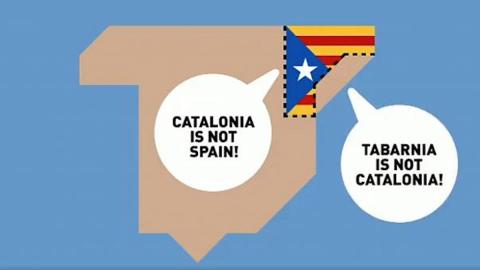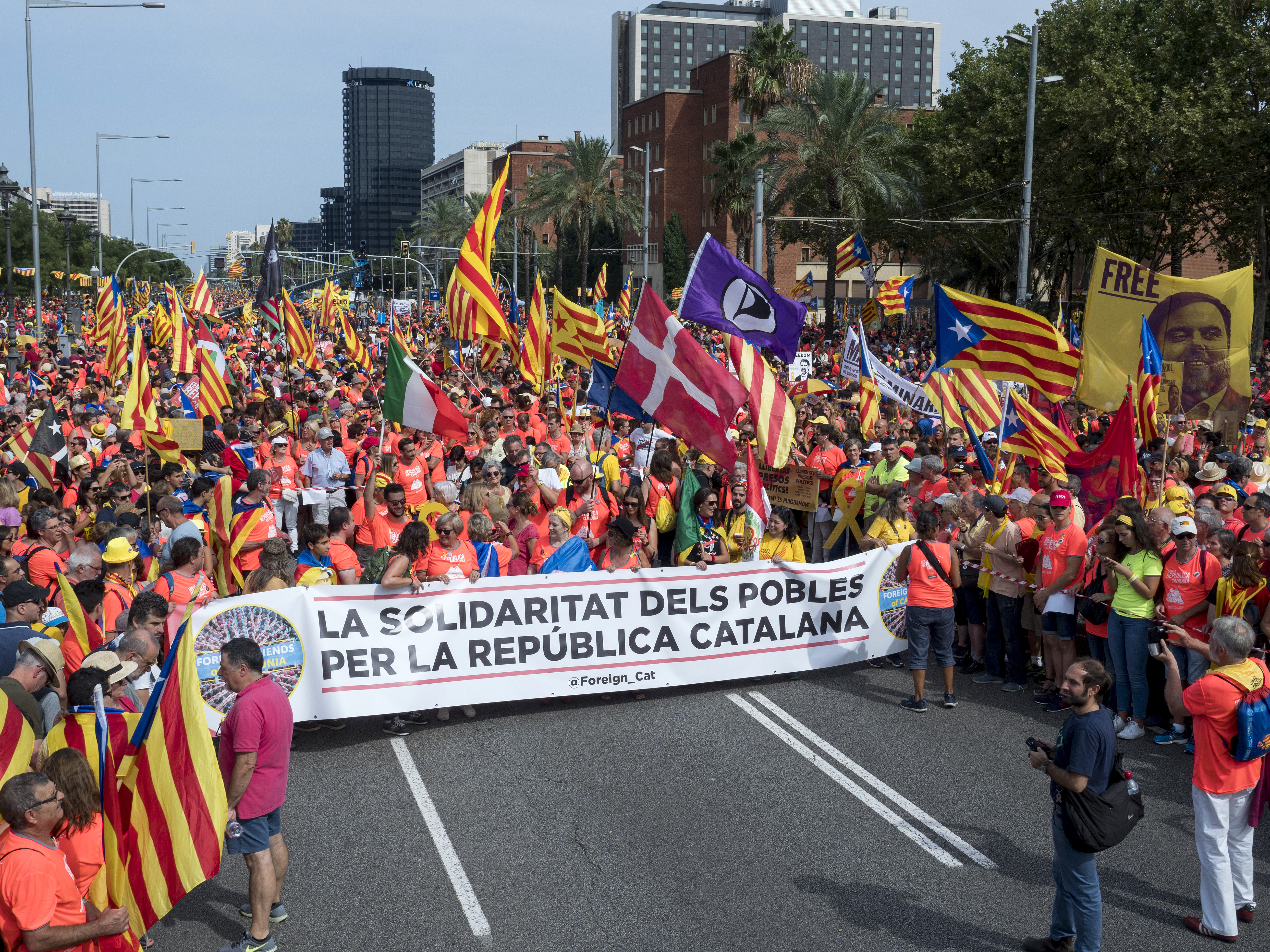Meet Tabarnia, Catalonia’s counter-separatist nightmare

Even a month ago, Tabarnia did not exist. Now the region has a flag, a map – and the intent to secede from Catalonia, if Catalonia secedes from Spain.
New elections have failed to defuse the Catalan crisis. At the vote on 21 December, the three pro-independence parties retained their majority in the Catalan regional parliament. The government they will be forming from today could take the rich, northeastern region of Spain once more to the brink of independence.
But something has changed since Catalonia’s latest attempt at slipping Spain’s surly bonds. Until last month, opponents of Catalan independence – both inside and outside Catalonia – seemed powerless to stop the region’s geopolitical drift away from Madrid. Now they have found a rallying cause: autonomy for Tabarnia!
The name may sound as if it has an ancient pedigree, but it is no more than a portmanteau for Tarragona and Barcelona, and a very recent one at that. While recent polls and elections have shown clear majorities pro independence in most of Catalonia’s regions, voters in the coastal strip from Tarragona to Barcelona have rejected it.

This is Tabarnia, and the mirror it holds up to Catalan separatism not only mocks its demands, it could eventually prove the most effective way to frustrate them.
Where Catalan nationalists proudly proclaim that ‘Catalonia is not Spain’, Tabarnia replies that ‘Barcelona is not Catalonia’. Tabarnians also echo the Catalan complaint that they contribute much more to the state coffers than they get back.
The fictional region went viral on 26 December, a few days after those latest elections confirmed its anti-secessionist exceptionalism, and a petition in favour of independence from Catalonia garnered tens of thousands of signatures in no time (1).

Last Tuesday, Tabarnia even got a president. Albert Boadella (74) is a theatre director who left Barcelona for Madrid in 2007 claiming he was being boycotted by Catalan nationalists. He swore the oath via video link from his ‘exile’ in Madrid, a dig at the insistence of Carles Puigdemont to be sworn in as Catalan president from his exile in Brussels.
How far will Tabarnia go? “As far as the secessionists have gone”, said Jaume Vives, Tabarnia spokesman Jaume Vives told the Guardian. Indeed, some Tabarnians want to do more than hold up a mirror to Catalan nationalism and are campaigning for a referendum in October 2019. They effectively want to create the Autonomous Region of Tabarnia, which could decide to remain part of Spain in case Catalonia – or what’s left of it – goes for independence.
“Tabarnia will become their nightmare just as they have become ours”, said Vives.

This map shows the proposed flag for the Autonomous Region of Tabarnia, and lists a few arguments in favour if its establishment: pension security, an end to fines for businesses that do not use Catalan, a redress of the fiscal and electoral imbalance to the disadvantage of Barcelona, and respect for the cosmopolitan, multilingual and pro-Spanish nature of the region. Tabernia would have 6.1 million inhabitants, the rest of Catalonia only has 1.4 million.
Electoral heat map found here on La Vanguardia, speech bubble map found here on Euronews (Spanish), third map found here on El Pais. See previous story on Catalan independence at #861.
Strange Maps #881
Got a strange map? Let me know at strangemaps@gmail.com.
(1) Counter-separatism as a remedy for (or at least vengeance against) separatism is not unprecedented in history. West Virginia seceded to remain in the Union when Viriginia joined the Confederacy. Transnistria and Abkhazia tore free from Moldova and Georgia respectively when those two former Soviet republics declared independence. The (virtually unrecognised) independence of those regions is maintained by Russian troops.





